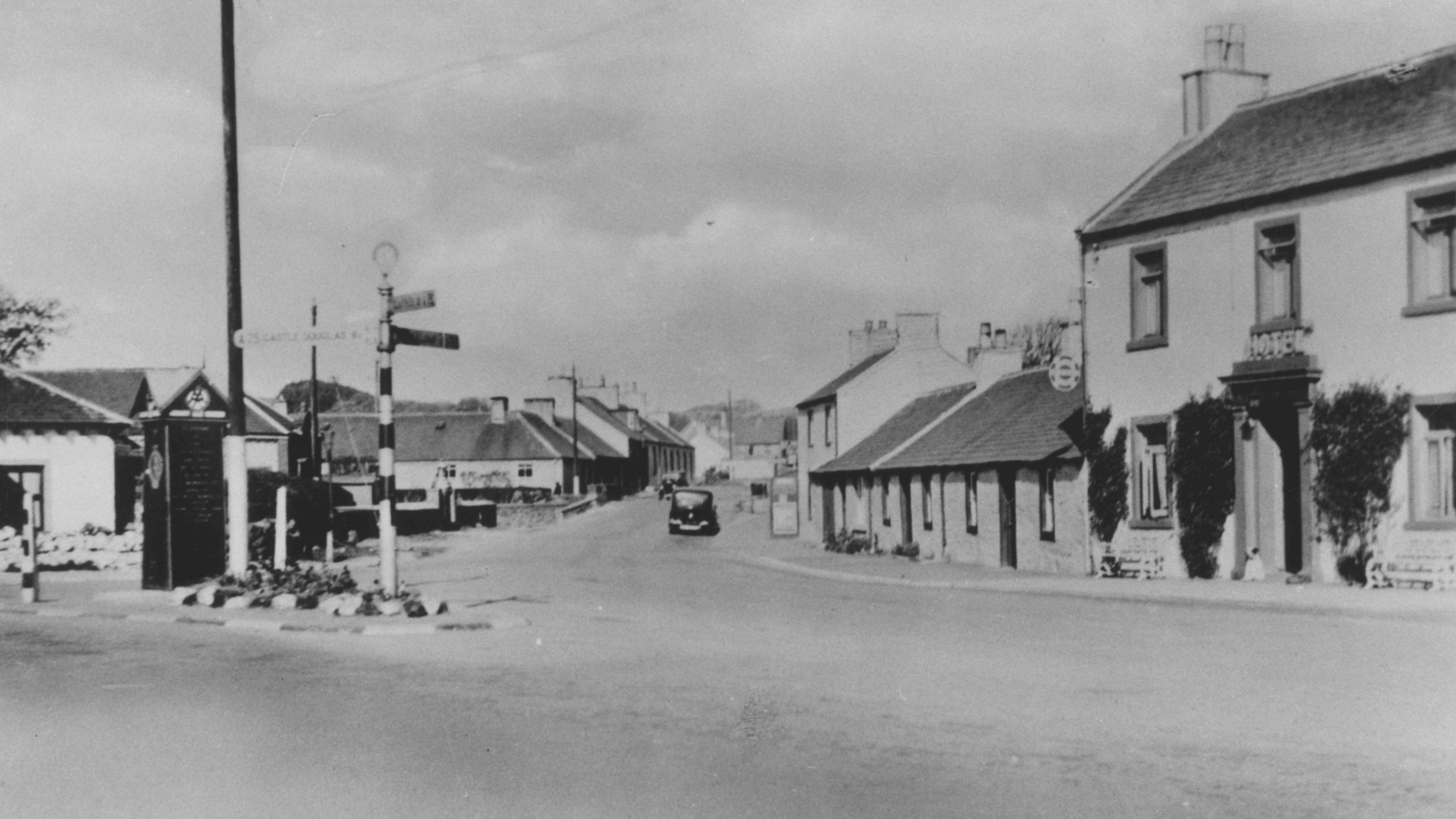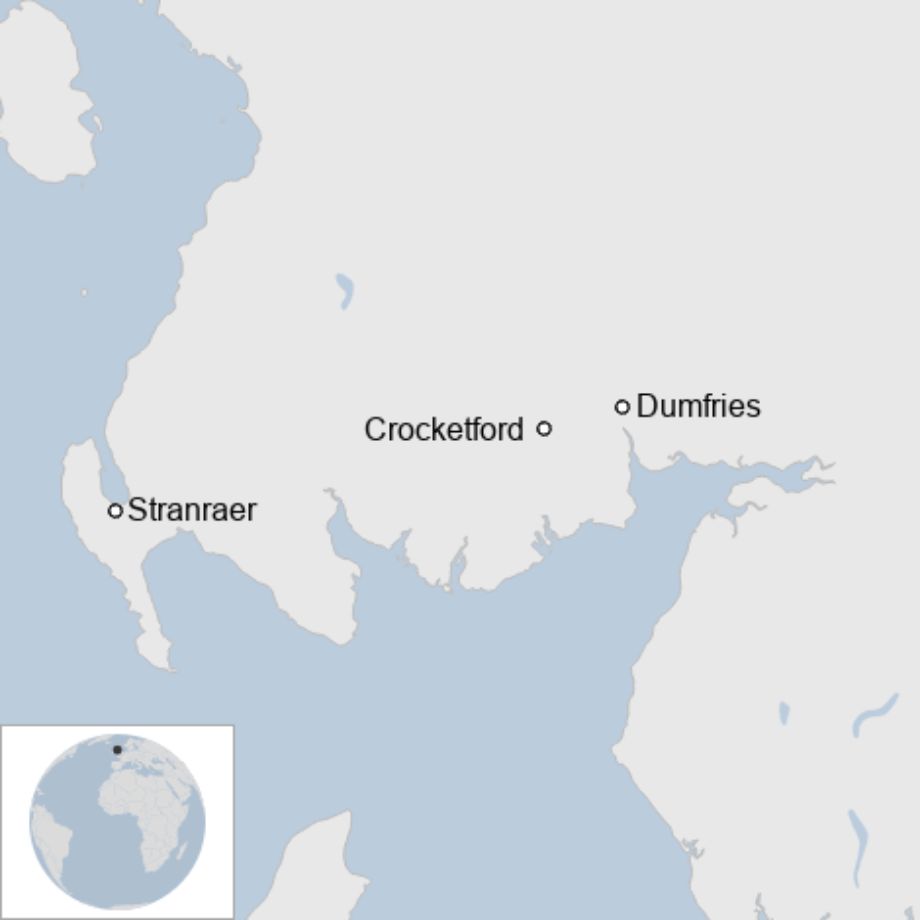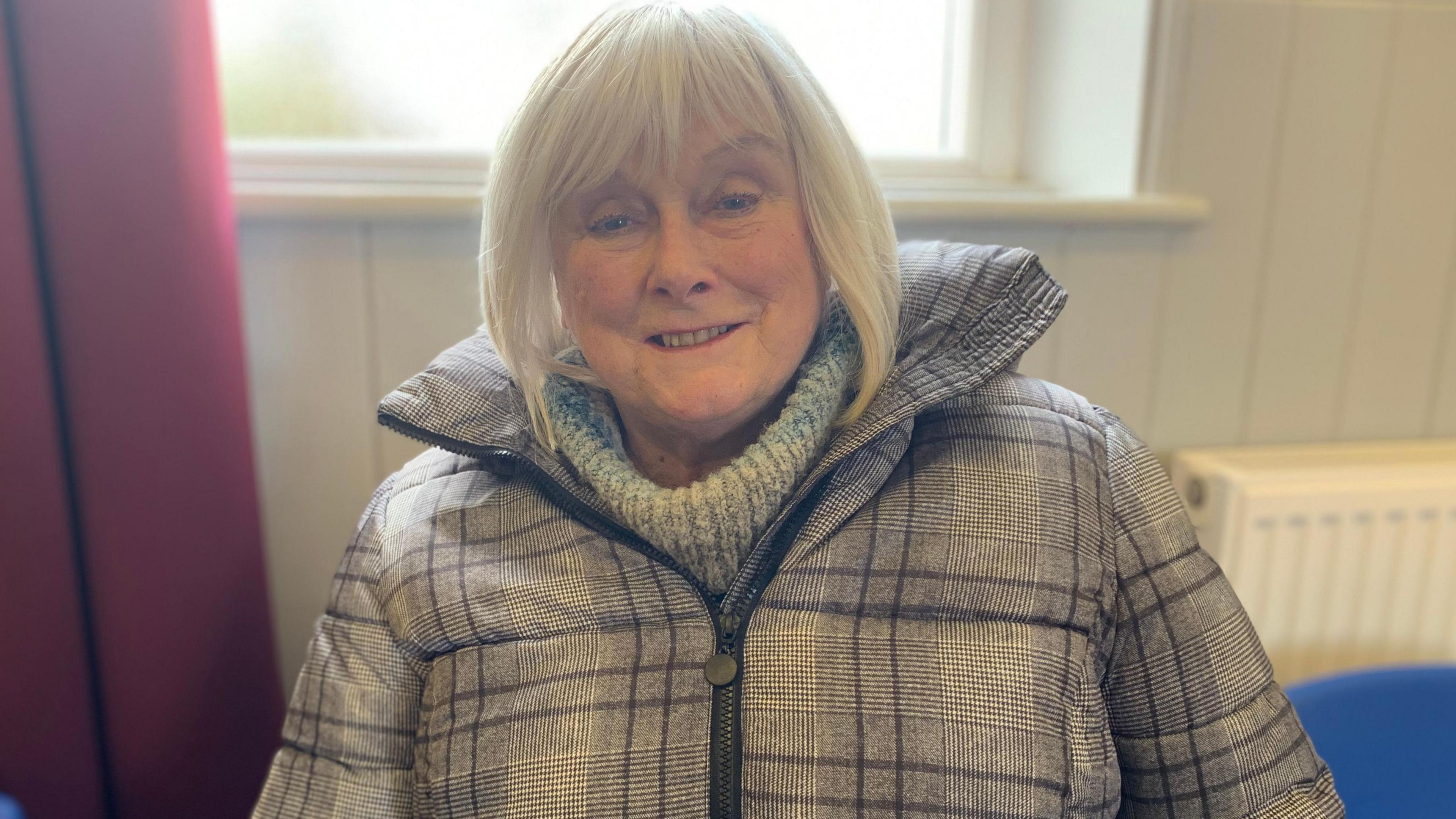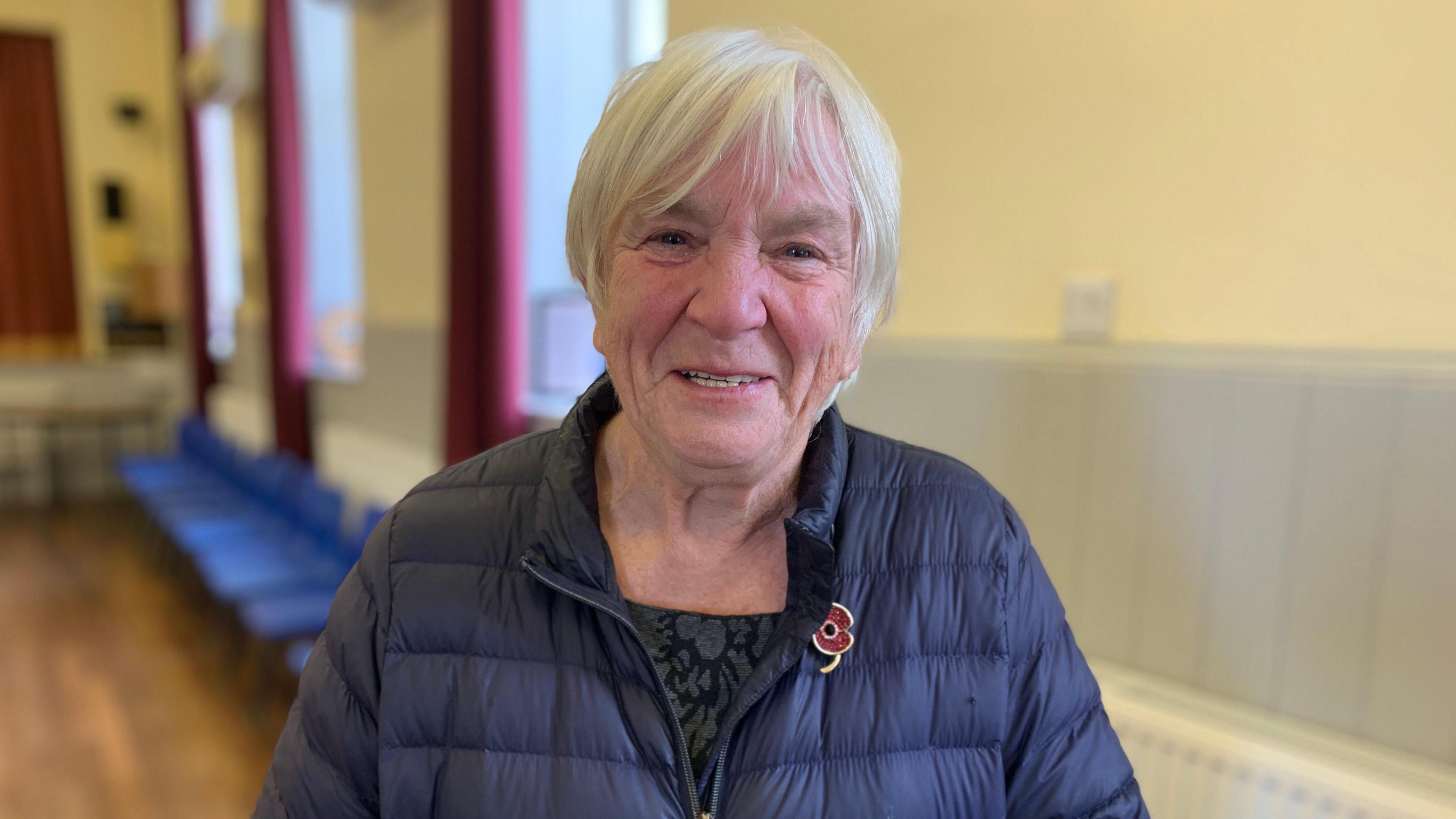The village that a religious sect helped to found

Crocketford sits near the midpoint between Dumfries and Castle Douglas
- Published
Crocketford sits about halfway between Dumfries and Castle Douglas - leading to its nickname as the Nine Mile Bar.
It is one of two villages sitting on the A75 road across the south-west of Scotland which has long campaigned for a bypass.
However, its existence owes a debt to a "fanatical" religious sect which ended up in the area in the late 18th Century.
The Buchanites were chased out of a number of places across the country before they ended up making their home in the south of Scotland.

"Crocketford didn't really exist before the arrival of the Buchanites in 1787," explains one history of the village.
"It was simply a meeting of drove roads, some coming down from Ayr and Girvan and some from as far as Portpatrick and beyond."
To say the Buchanites had a chequered history before they secured their tenancy at a farm in the area would be something of an understatement.
The movement was named after its charismatic leader Elspeth Buchan, born in Banffshire in the late 1730s.
She became convinced she was an incarnation of a woman referred to in the Bible as being "clad with the sun, the moon beneath her feet, and mother of a wonderful child".

The A75 passes through the middle of Crocketford
Among her claims was that she could confer immortality on those she breathed upon.
Initially she found some favour in Irvine - alongside Rev Hugh White - but was ultimately expelled from the town in 1784, taking about 50 followers with her.
They ended up at New Cample near Closeburn where their "great fiasco" occurred.
After a fast of 40 days and 40 nights - for her followers only, not herself - they went to Templand Hill to await their anticipated ascent to heaven.
Wearing loose slippers which could be easily kicked off when their journey began, they were left disappointed when angels failed to appear.

A history of the village says it "didn't really exist" before the arrival of the Buchanites
It lost the sect some followers but those remaining eventually moved to Crocketford.
They began to help lay the foundations of the modern day village.
Buchan died on 29 March 1791 but her faithful follower Andrew Innes waited for her to rise from the dead six days later as she had promised.
Many of the sect dispersed over time but Innes remained in the village and kept Buchan's remains with him waiting for her return.
He died in 1846 - the last Buchanite in Crocketford - and her coffin was placed underneath that of his own in his grave so that he would wake when she arose.
Signs of the sect remain in the village to this day - Newhouse which they built still stands and street names include Buchanite Court, Elspeth Road and Maiden Way.

Joan Rutherford said people who had lived in Crocketford a while were aware of its history
Joan Rutherford, who has lived in the area for more than 30 years, said people like her were aware of the links.
"The old stagers - who have not necessarily lived here all their lives - but the long-stay residents know all about it," she said.
"But the people coming into the new houses, I don't think they've got an idea at all."
Ann Botel has lived in the village even longer and admits she was unaware of its colourful past when she first came.
"I was hardly aware of Dumfries - never mind the history for Crocketford," she admitted.
She really got interested when working on a booklet about the village to mark the Millennium.

Ann Botel knew nothing of the links until after she moved to the village
"It was very, very interesting because they were really quite a strange group," she said.
"But they did do some good things for the village in that they built some of the houses.
"And they actually did quite well in terms of inventing a sort of machine that worked really well for them at producing cloth and things like that."
She said Buchan herself was an unusual character.
"She must have been very charismatic to have actually persuaded these people to stick with her, but she certainly had some queer ideas," added Ann.
However, she said many people in the area remained unaware of the Crocketford connection.
"I think the newcomers probably don't really know much about the history of the Buchanites although quite a few people do talk about them and what they did," she said.
"But it tends to be more about what happened at Closeburn rather than in the village here.
"But I think that the Millennium booklet and the exhibition certainly helped to sort of put them on the map.
"There's not really been much after that - so there are people in the village that probably still don't have a clue about them."
Get in touch
What stories would you like BBC News to cover from the south of Scotland?